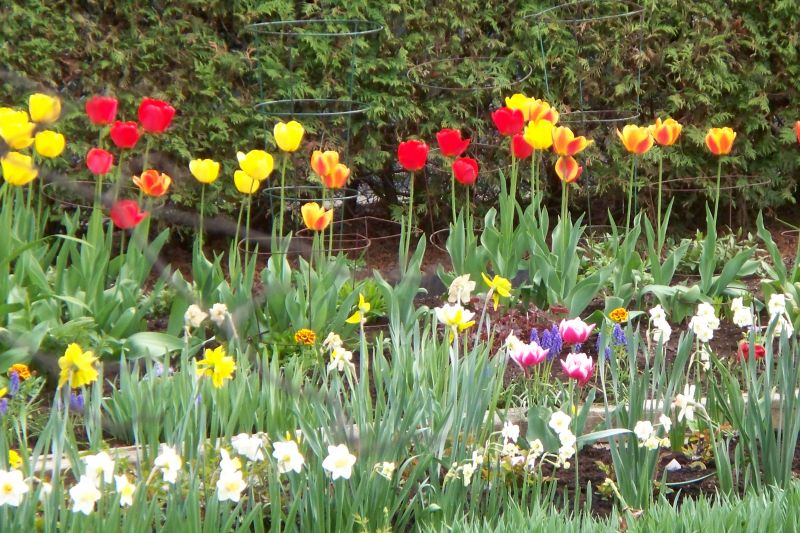Divide and Conquer - Gardening With Bulbs, Part One
Good, cheap, fast. Pick any two. That's what is said about hiring somebody to do a job. It can also be said about flowering bulbs.
They're good, for sure. What other plant will reward you, year after year, without your doing a darned thing? And those flowers come at a welcome time of year. After the long winter which may not be all that long by the calendar but always seems long to me it's a real pick-me-up to see those cheery daffodils, crocuses, and irises blooming their little heads off.
Are they cheap? Unless you buy super-expensive ones, they certainly are. Think of it: you buy a bulb for just a dollar or two each. You plant them in the fall. If you don't pave over them or allow your dog to dig them up, they are very likely to flower every spring. And we do mean every spring. If you buy an old house and leave the garden undisturbed until the next spring, the chances are good that will show you some brave little snowdrops, happy little daffodils, regal irises, or the like. It's entirely possible that the bulbs that flower in the spring were planted decades earlier. So for a dollar or two, you are buying a plant that will flower annually, not just for you but for future residents of your property.
Fast? No. They aren't fast. These aren't marigolds or zinnias. These are the get-rich-slowly variety of plant. You don't even see any results until months after you plant them. However, if you wait for a few years, your bulbs will grow baby bulbs, or the equivalent for iris rhizomes. After a few springs, you'll look at your daffodils or crocuses or irises and realize that they are crowded. Where you planted one bulb, now there is a jumble of plants. You aren't just getting one flower, you're getting a bunch of them, and it's looking a bit crowded. What to do?
This is another way in which bulbs just aren't fast. You can't divide them and expect them to do just fine immediately. No, you have to wait until the fall to divide them. That presents a problem. By the fall, you may have forgotten where these bulbs are. Of course, maybe you're better organized than I am, because every spring some bunches of grape hyacinths keep coming up in the yard and I make a mental note of their location so that I can divide them in the fall. It never works. By fall, they've completely died down and I can't find them. This year, by golly, I'm going to make a map of where those grape hyacinths are. I'm going to measure from two different points, and then I'm going to draw a picture. That way, I'll be sure to find them when they've died down.
Once you have dug up a bundle of bulbs that have started bulb families, you get to engage in one of the most rewarding and time-honored of all gardening activities: you get to give some to your friends. They, in return, will give you a baby azalea or perhaps some produce from their gardens. By dividing your bulbs, you will have conquered a neighbor! Well, maybe that's too far to take the metaphor, but you see what I mean. That little bulb has, in effect, produced dividends. Maybe you will choose to buy something from a neighbor in exchange, or you might choose to enrich your garden by increasing the area in which your bulbs grow. Either way, bulbs are some of the most frugal gardening investments you can make and in these uncertain economic times, who doesn't appreciate frugality?
In tomorrow's article, I'll explain exactly how to dig up and divide your bulbs.
